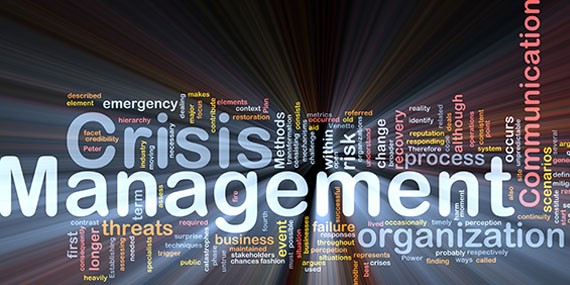
According to the Marketing 2.0 Conference experts, reputation crises can still occur despite proactive efforts.
The digital age has ushered in an era where businesses and individuals are more susceptible than ever to reputation crises. With the rapid spread of information on the internet and social media, a negative comment can quickly spiral out of control.
However, with the right strategies in place, reputation recovery is possible and can lead to a stronger and more resilient image. In this blog post, you will explore effective crisis management techniques shared by the experts of the notably the Marketing 2.0 Conference tailored to the digital era, emphasizing the importance of proactive reputation maintenance and recovery.
Understanding The Digital Landscape
Before diving into strategies for reputation recovery, it’s essential to understand the unique challenges posed by the digital age. In the past, reputation damage might have been limited to word-of-mouth or a negative article in a local newspaper. Today, a single tweet or Facebook post can reach millions of people within minutes, making the stakes much higher.
One of the defining features of the digital age is the lightning-fast speed at which information travels. In a matter of seconds, a minor issue can become a viral sensation, leaving little time for
organizations to react.
- Permanence Of Online Content
Once something is posted on the internet, it can be incredibly challenging to remove or erase it entirely. Even if a damaging post is deleted, others might have already captured and shared it.
- Amplification Through Social Media
Social media platforms act as amplifiers for both positive and negative information. A single negative comment can snowball into a major crisis when shared and commented on by thousands.
Proactive Reputation Maintenance
According to various marketing professional conferences, the best way to handle a reputation crisis is to prevent it from happening in the first place. Proactive reputation maintenance is an ongoing effort to build a positive image and mitigate potential risks.
- Monitor Online Conversations
Regularly monitoring social media, review sites, and online forums can help identify potential issues before they escalate. Tools like social listening software can be invaluable in this regard.
- Build A Strong Online Presence
Having an active and engaging online presence can help counteract negative information. Regularly updating your website and social media profiles with positive content can make it harder for negative narratives to gain traction.
- Educate Your Team
Ensure that your team members know the potential risks and how to respond appropriately to negative comments or crises. Having a well-prepared team can be crucial in containing and resolving issues.
Responding To A Reputation Crisis
According to the Marketing 2.0 Conference experts, reputation crises can still occur despite proactive efforts. When they do, it’s vital to respond swiftly and effectively.
- Acknowledge The Issue
Ignoring or downplaying a crisis rarely works. Acknowledge the issue publicly and express your concern. Being transparent about the situation can help build trust with your audience.
- Apologize And Take Responsibility
If your organization is at fault, don’t hesitate to apologize and take responsibility for the mistake. People appreciate honesty and accountability.
- Communicate Your Action Plan
Share your plan for addressing the issue and preventing similar problems in the future. Transparency in your actions can help rebuild trust.
- Engage With Your Audience
Engage in a constructive dialogue with your audience. Respond to comments and questions openly and honestly. Address concerns and provide updates on your progress.
Utilizing Online Reputation Management (ORM)
According to global marketing conference experts, online reputation management (ORM) is a set of techniques and strategies to control and improve an individual’s or organization’s online image.
Optimizing your content for search engines can help push negative results further down in search engine rankings, making them less visible.
- Content Creation
Creating and promoting positive content, such as blog posts, articles, and videos, can help overshadow negative information.
- Review Management
Actively manage and respond to online reviews, both positive and negative, to show that you value customer feedback and are committed to improvement.
The Importance Of Continuous Monitoring
Continuous monitoring is paramount in reputation management. In the dynamic digital age, the online landscape evolves rapidly, and issues can resurface unexpectedly. Vigilance ensures that new challenges are addressed promptly, preventing reputational setbacks.
Active monitoring involves real-time tracking of social media, review sites, and online discussions. By promptly identifying and addressing emerging issues, businesses can mitigate potential harm and maintain public trust. Additionally, ongoing monitoring allows for the adaptation of strategies and the reinforcement of positive content to suppress negative search results.
In summary, continuous monitoring isn’t just a post-crisis activity; it’s a proactive measure that helps safeguard your reputation in the ever-changing digital world.
Conclusion
In the digital age, reputation management is a dynamic and ongoing process. According to various conferences for marketing professionals, notably the Marketing 2.0 Conference, by proactively maintaining a positive online image and responding effectively to crises, individuals and organizations can recover their reputations and emerge stronger and more resilient. Embracing the digital landscape and utilizing online reputation management strategies are key to surviving and thriving in today’s interconnected world.
Remember, crisis management is not solely about addressing problems—it’s also about building a positive brand that can weather any storm. Stay vigilant, stay engaged, and stay resilient in the face of reputation challenges in the digital age.










